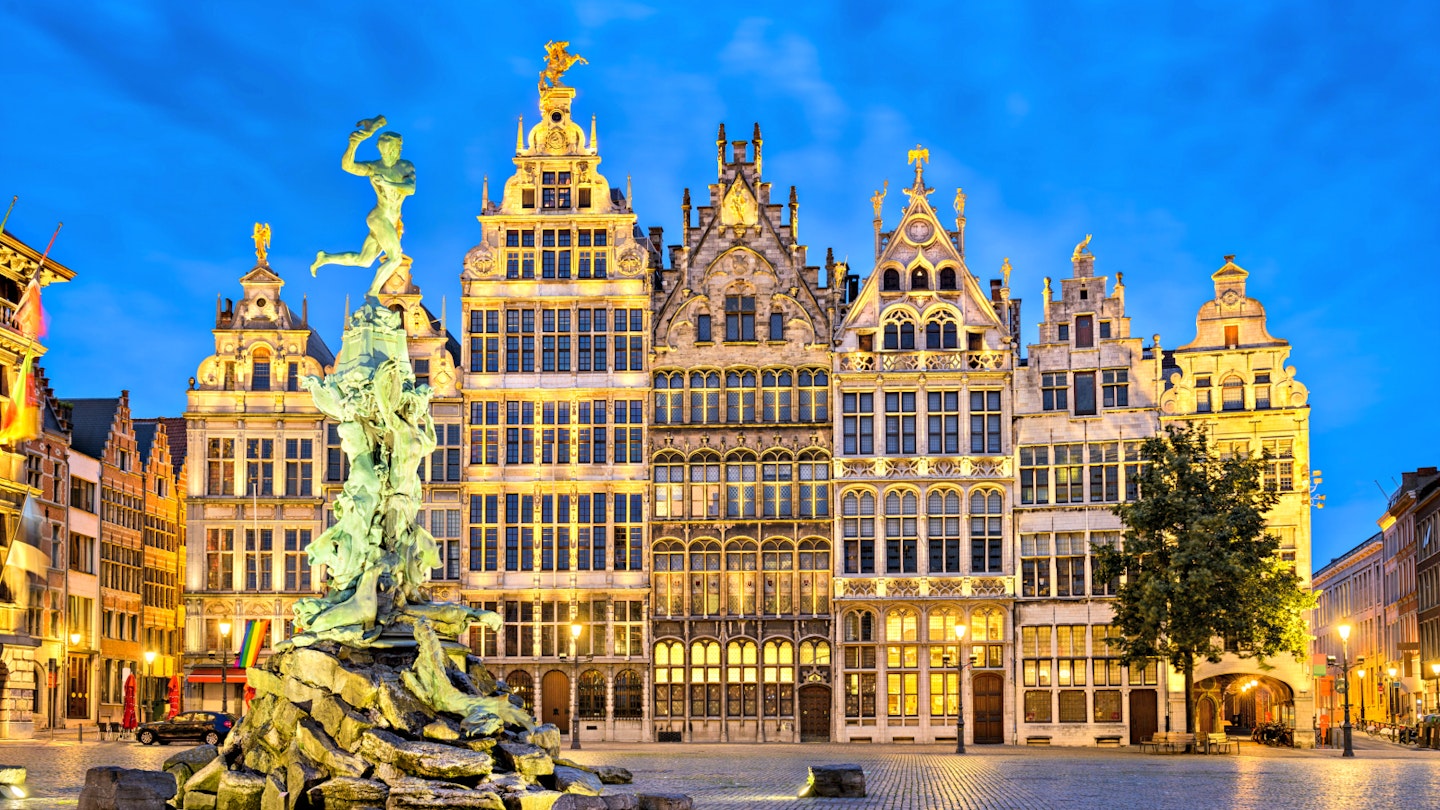
Antwerp has always been a singular place, something of an eccentric. Its reputation as a fashion and clubbing centre may have arisen in recent decades; however, dig deeper, and you will uncover a port city that has consistently pushed boundaries. From master painter Peter Paul Rubens to the eclectic beats of Rampage, Belgium’s largest port has been at the forefront of cultural trends for over 500 years. Could this be one of the coolest cities worldwide?
A Hotbed of Illicit Literature
When Christophe Plantin arrived in Antwerp during the 1540s, the wealthy port’s tolerance was remarkably ahead of its time. The master bookbinder’s trade in the printed word was nascent, yet he risked severe penalties in Paris for pursuing his passion.
Despite an untimely end to Plantin’s burgeoning career (his fate sealed by a chance encounter in a dark alley), he established a thriving printing business in Antwerp, living an extraordinary life as a humanist and collector.
The remarkable legacy of Plantin, along with his son-in-law Jan Moretus, remains intact. The extraordinary Museum Plantin-Moretus houses two of the oldest printing presses globally and showcases the original lead Garamond typeface crafted by Parisian engraver Claude Garamond. Additionally, its 17th-century bookshop is pristine.

Antwerp’s Baroque Star
Throughout the subsequent century, Antwerp’s worldly confidence endured, albeit with fluctuating fortunes. Emerging during this time was its most famous son: painter Peter Paul Rubens.
Anticipated to celebrate Rubens’ genius in 2018, the Antwerp Baroque festival paired the artist with contemporary creatives. Painter Luc Tuymans, conceptualist Jan Fabre, and choreographer Sidi Larbi Cherkaoui, do not merely share a hometown with the baroque master; they draw inspiration from his dark and evocative palette alongside his theatrical emotionality.
The Rubenshuis features his finest works (staying in the city), including The Annunciation and one of only four self-portraits. It serves as his former home and studio, also featuring paintings by contemporaries such as Anthony Van Dyck.
Moreover, the Rockoxhuis is set to reopen next year. This museum, once home to renowned collector Nicolaas Rockox, a former Antwerp burgomaster (mayor), showcases works by Rubens alongside pieces by Wildens and Pieter Brueghel the Younger. The renovated space will also incorporate the adjacent house where still-life painter Frans Snyders once resided.

When Flemish Fashion Took on the World
In 1986, six talented designers—graduates of Antwerp’s Royal Academy of Fine Arts—along with a shoe-seller-turned-creative-director, made history by bringing their avant-garde innovations to London Fashion Week.
After struggling to pronounce their long Flemish names, the group gained recognition as the Antwerp Six. Comprising Ann Demeulemeester, Dries Van Noten, Dirk Bikkembergs, Walter Van Beirendonck, and Marina Yee, they emerged as notable contenders in the fashion arena, securing orders from retailers like Barney’s New York and Liberty London. Their daring styles encapsulated the risk-taking spirit of the 1980s and ’90s.
Alongside their classmate Martin Margiela, the Antwerp Six propelled the traditional nine-to-five shoulder pads and peplum dresses into obsolescence. Instead, they embodied anti-glamour and provocative gender fluidity, effectively reflecting the edgy character of their city.
This legacy endures across Antwerp, with Walter Van Beirendonck leading the fashion department at the Royal Academy to nurture a new wave of Belgian designers, including Raf Simons, Veronique Branquinho, and Kris Van Assche.

In the vibrant bohemian Zuid district, just across from the grand Museum of Fine Arts, Ann Demeulemeester’s flagship store serves as an airy stage for her designs, while Dries Van Noten’s Het Modepaleis occupies a prime location in the fashion district. His lush fabrics and theatrical designs stand in contrast to the ancient wooden cabinets and brass fittings adorning the space.
Adjacent to Dries’s emporium is MoMU, one of the world’s most esteemed fashion museums, hosting seasonal exhibitions that have recognized both Dries Van Noten and Martin Margiela.
For those wanting to take home a piece of Antwerpen style, explore independent retailers like Renaissance, Verso, Coccodrillo, and Elsa for shoes, often showcasing designs from graduates of Dries Van Noten’s academy. Additionally, a vibrant vintage scene flourishes with dealers like Verlaine, known globally for their museum-quality pieces. Exceptional designer resellers also include Rosier 41 and Label Inc where fashion lovers can find recent styles at stunning discounts.
Antwerp Tears Up the Dance Floor
The explosion of Technotronic’s Pump Up The Jam on dance floors in 1989 caught many off guard, as few knew its origins or the vibrant scene it represented. This innovative sound, termed new beat, emerged from Belgium’s rich music landscape, merging house and hip-hop.
In his 2012 documentary The Sound of Belgium, director Jozef Devillé proposed that this remarkable electronic music movement—and its numerous offshoots such as EBM (electronic body music), house, and techno—stemmed from the transgressive folk traditions of carnivals, the Decap dance hall organs, and community tea dances of the 1960s and ‘70s.

Antwerp’s music scene is infused with passion, attracting fashion and art students alongside sailors and diamond merchants. Set within a 16th-century church, Café d’Anvers ranks among the city’s finest nightclubs, drawing diverse crowds to the city’s red-light district nearly three decades post-establishment.
Café Beveren features Antwerp’s last Decap organ, belting out classic tunes to captivated crowds. Conversely, trendsetters often flock to Pekfabriek, a late-night venue in Borgerhout that was transformed from a pitch factory.
Antwerp hosts a variety of summer music festivals beyond the renowned EDM event Tomorrowland, including Rampage for drum ‘n’ bass and dubstep, Dystopia catering to house music aficionados, Summerfestival focused on electronica, and Laundry Day presenting hip-hop beats.
Antwerp’s unwavering dedication to musical diversity exemplifies the city’s refusal to rest on its laurels regarding cultural innovation. This independent spirit positions Antwerp as a frontrunner in the race for recognition as one of the coolest cities globally, perhaps for another 500 years.





